Disclosure: Meeple Mountain received a free copy of this product in exchange for an honest, unbiased review. This review is not intended to be an endorsement.
I don’t read novels often, so it’s not a major surprise that I have never read any of the six books from the Marcus Heitz novel series The Dwarves.
In doing research for this review, I was surprised to find I haven’t met anyone else who has read the books either. The six books in the series kicked off with The Dwarves in 2003, with the most recent book coming just three years ago.
There’s even a video game based on this intellectual property, also something I had never heard of. So, when Pegasus Spiele offered to send a review copy of The Dwarves: Big Box, I was intrigued. I didn’t know anything about the series but I liked the artwork and the idea of a dice-driven, light-on-rules battler set in a fantasy universe.
Once I got The Dwarves: Big Box to the table, I appreciated how the base game (released in 2012) is very approachable as a cooperative experience, light on rules, and a little too light on story (given that there is such a backstory to begin with). While it falls victim to many of the things that fall flat for me as a coop gamer, I liked how breezy each game turned out.
I’ll just apologize now for talking so much about Pandemic.

The Dwarves: Pandemic for LOTR Fans
The Dwarves leans hard into the books by giving players the chance to play as one of 12 characters from the novels. You’ve got dwarves, more dwarves, and the occasional non-dwarf (one looks like he is the non-dwarf owner of a theater business, but given his low Battle attribute, I’m not sure I would want to take that guy out to fight trolls, you know?).
The Dwarves has the feel of a game based on something like The Lord of the Rings, then, mixed with a taste of any of the Pandemic line of games.
Working with up to six players, each turn is the same: advance a Hero tracker that is slowly moving towards the Doom tracker figure, with the game ending if the two trackers ever meet in the middle. This condition is similar to how games such as Ark Nova or a different Pegasus Spiele game, Crown of Emara, might end.
The hero dwarves are trying to complete various tasks around Girdlegard, an expansive map of hexagonal spaces. These tasks include completing attribute checks via dice rolls, battling enemies, or sending dispatches to the dwarven council. The latter is also an attribute check based on your Craft ability, one of three attributes in the game along with Battle and Speed.
Sometimes, these tasks allow for the game’s event tracker (the Scenario deck) to move forward. Sometimes, these tasks let players draw treasure from a somewhat bland deck of basic item cards.
Most turns of The Dwarves start with the Hero marker moving into a space that will force a player to roll three spawn dice that will slowly populate the board with bad guys: orcs, trolls, and Elfar, the latter of which look a lot like elves with a fancier name. No matter: these enemies are mainly just in the way, without an ability to really inflict damage on players unless an attack roll comes up completely empty during a player’s turn.
That’s right—if you are fighting, say, four bad guys on the same space, you’ll roll a number of six-sided dice equal to your Battle rating. If you roll a 6, you can take out any single enemy; 5s take down trolls and orcs, while 4s take out orcs. If you throw an airball and miss every enemy, you take a single point of damage regardless of the number of bad guys on the hex.
So, combat in The Dwarves is really forgiving. And if you are rolling well, you won’t need any of the extra help the game gives along the way. In a recent five-player game, we only threw ONE complete miss of an attack during the entire game. In my first two-player game, we didn’t miss at all. This led to me literally checking each of the dice to see if all the six-sided dice are really numbered 1-6, because I was on such a roll.
And let’s talk about that help. Moving up on the Council track grants ongoing bonuses based on where the tracker resides at any given time. Depending on where your team is, you may get a bonus that lets you re-roll some of your dice every turn, which certainly helps if you have the Council marker in the second-from-the-rightmost space. Some players have powers that also allow for a re-roll. Equipment cards, often the reward for completing attribute checks during play, also provide benefits to your character stats or to provide one-time bonuses.
When any player draws equipment cards, they can magically transport those items to any other dwarf on the map. (In 99% of games, players have to share a space to trade items; maybe that hadn’t been invented yet when The Dwarves first arrived in 2012?) You’ll have dozens of turns to get through the Scenario deck, and once you’ve gone through a certain threshold of the Scenario cards all players share in the collective victory as long as none of the good guys have perished.
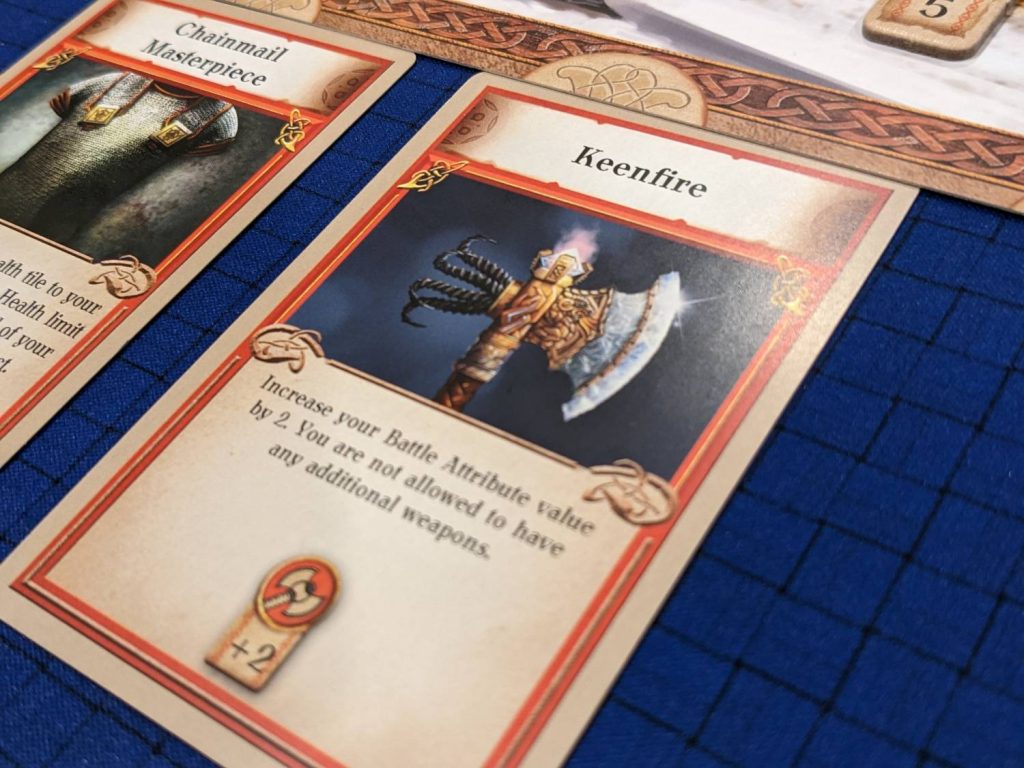
The Best Mechanic: The Perished Land
To start most turns, someone is going to roll those spawn dice. Whenever five or more bad guys show up on the same hex, the hex “dies” and becomes Perished Land. A Perished Land tile is then added, to indicate that walking through those tiles will cost a hero one health point or one bump on that Doom track, driving the bad guys closer to victory.
But pushing enemies to new tiles is a nifty mechanic—a tile is added showing where each new enemy may move to, before pushing all other bad guys on that tile forward towards the center of the map. It has the feel of what happens when a Pandemic outbreak triggers another outbreak. In The Dwarves, you’ll have some early turns where the map is empty, but that will change in later turns where you are facing back-to-back-to-back enemy spawn eruptions, placing new bad guys seemingly everywhere.
This means the map has some nice depth to it starting at about the midpoint of each game, as players have to work together to fight fires all over the place but also focus on that round’s Scenario card. The visual is cool, but ultimately the decisions are not that interesting, because the level of tension is so low and you know exactly where the new batches of bad guys will appear.
There are even event cards in the deck known as Threat cards, which may shake up the rules for a turn or two. But if you have a balanced team of dwarves—and this might be an issue with a lower player count—you are probably going to have a couple great at fighting, a couple great at running around the map completing Adventures, a couple who are good at crafting. Nothing in the base game’s deck is going to snow you.

The Extras
It would be difficult for this review to work through all five Books (game modes) included in The Dwarves: Big Box, which comprises all the game’s base and expansion content ever released. But what I enjoyed most about this compilation is the idea of the mini expansion: lots of little ways to affect how a game of The Dwarves can play out.
In some cases, you’ll be hunting the map for diamonds. In others, the equipment gets a slight boost (and again, this treasure isn’t that exciting, so the treasure/loot hunting of The Dwarves is pretty bland). Sometimes, the Threat cards have to be chosen and dealt with immediately, versus surfacing only when shuffled Thread cards are drawn when replacing Adventures in the market row.
Book 5 combines elements from the other Books into one package if a group wanted to work through all five Books in order, although this is not required. There’s even an expert variant that allows for players to convert spaces to Perished Land when only four enemy troop pieces are on a single hex, instead of five pieces.
All of this is nice, but I’m not sure it really qualifies as a “big” box. There are lots of cards to change up play, but you will still ultimately spend time running around the map to touch spaces and kill off orcs while addressing each Book’s main mission. The 12 minis included here for the characters are available in any game, and the dice checks are mostly going to remain the same no matter how The Dwarves is played.
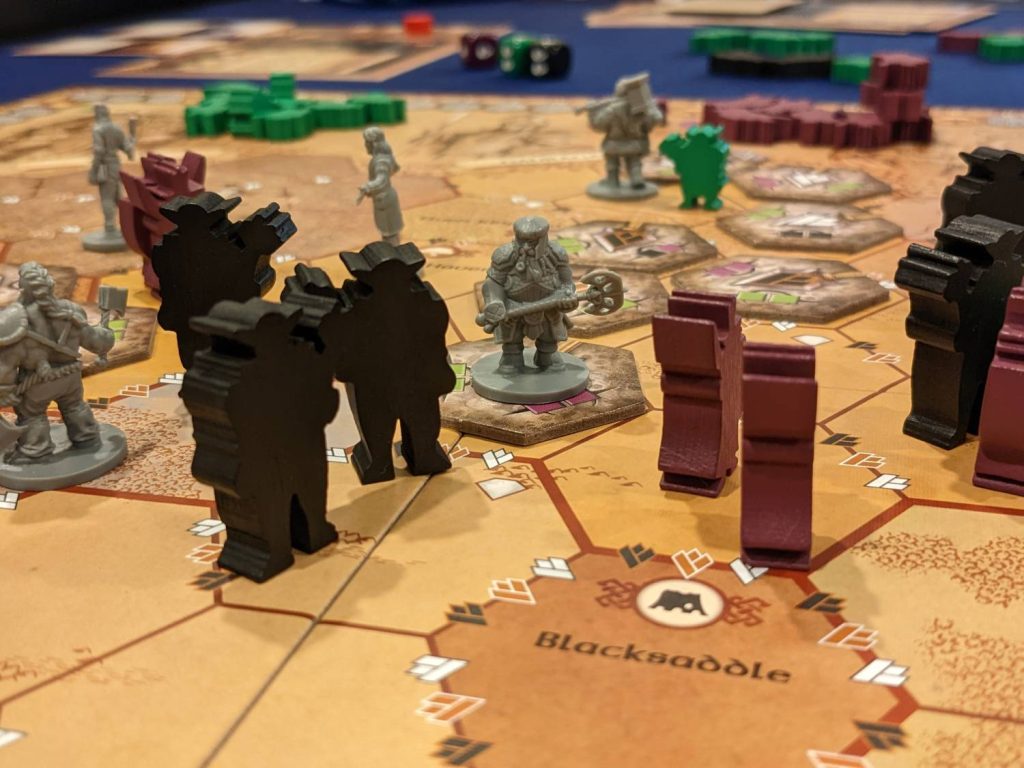
The Pandemic Effect
The Dwarves: Big Box is only okay.
While I don’t do a lot of co-op games, this one lands well as a two- or three-player game that can provide a few interesting moments each time it hits the table. It just never inspires massive amounts of fun, even though it is amusing when someone rolls well enough to clear an entire hex of bad guys with a single swing of their axe.
The nifty enemy spawn mechanic is cool, and it’s cool even if you have played Pandemic 50 times like I have. But are you going to play The Dwarves only to spawn enemy troops on a map? Probably not, right?
That makes the game harder to recommend. There are a lot of games out there that ask players to move to a space, roll four dice to complete an attribute check, and gain a card or a gold token or a minor, limited special ability. The Dwarves is further hurt by the fact that the base game (Book 1) is just a little too easy. You are going to win the game almost every time you play it, and while some gamers are looking for co-ops where your win chances are so high that they are essentially guaranteed, I am not.
In my first five-player game of The Dwarves, we literally house-ruled the way the Doom tracker works. We changed it, so that every time a Perished Land tile was added, the Doom tracker went up. I was happy that we lost the game, because if we hadn’t changed this rule, the Doom tracker would have barely moved from its start space and we would have won the game in a landslide.
Tension is vital to making a co-op game work, especially one where you are fighting against the game itself. The Dwarves is a comfy experience even on the level just harder than normal difficulty; I would recommend going with the hardest version of the game where possible, although this adds a bit of time to a game that is best served as a one-hour experience.
I don’t think The Dwarves will prove legendary for many players, but if you are a gamer familiar with the books (if so, let me know so I can say I’ve met you) and looking to play out turns where you can guide Balyndis Ironfinger or Gandogar Silverbeard to Toboribor and complete an Adventure to kill off four orcs, this game might be for you.
If anything, The Dwarves is a gentle reminder that I need to read more fantasy books!!


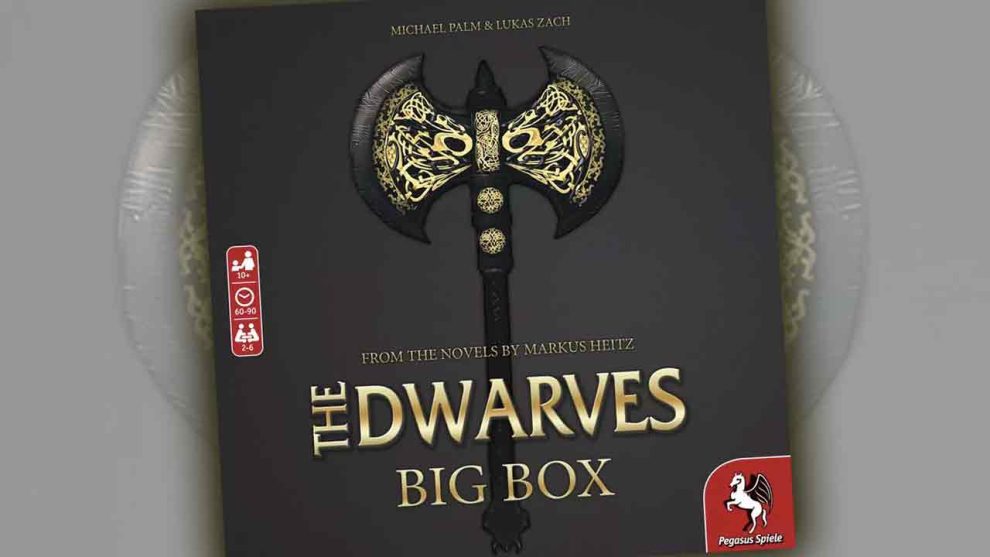

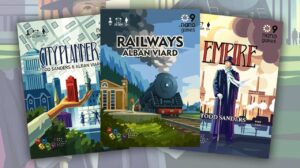


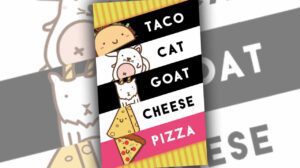




Add Comment